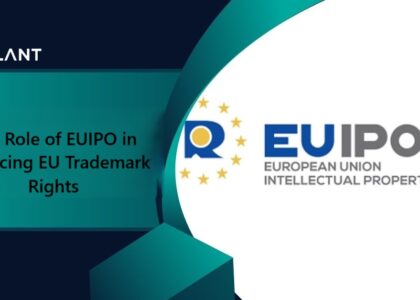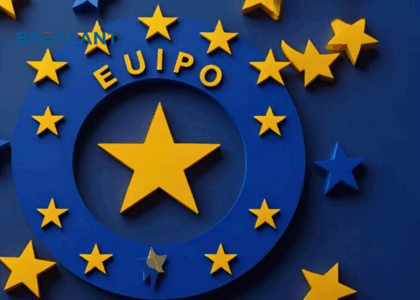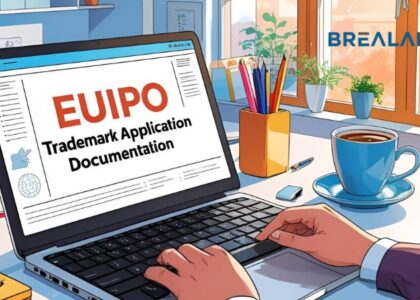Trademarks are an essential aspect of intellectual property protection, serving as a valuable tool for brand recognition and safeguarding a company’s identity. In Europe, the European Union Intellectual Property Office (EUIPO) is the authority responsible for granting and managing trademarks. If you’re considering registering a trademark in the European Union, it’s crucial to understand the EUIPO trademark process. Let’s dive into the technicalities of the EUIPO Trademark Process.
How to protect the brand?
This step-by-step guide will walk you through the process, helping you protect your brand effectively.
Step 1: Preliminary Research: Start by searching the EUIPO’s trademark database to ensure that your proposed trademark is unique. This step helps prevent potential conflicts with existing trademarks, saving you time and money in the long run. Make sure your trademark is distinctive and not confusingly similar to others already registered.
Step 2: Determine Eligibility: Not all signs or symbols can be registered as trademarks. EUIPO has strict eligibility criteria. Your proposed trademark must be:
- Distinctive: It should set your product or service apart from others.
- Not descriptive: It shouldn’t describe the product or service.
- Not deceptive or misleading.
- Not against public order or morality.
If your trademark meets these criteria, you can proceed with the application.
Step 3: Choose Your Trademark Type: EUIPO allows various types of trademarks, including word marks, figurative marks, sound marks, and more. Depending on your business and branding strategy, choose the most suitable type. You can also opt for a combined mark, which combines both words and a figurative element.
Step 4: Identify the Appropriate Classification: Trademarks are registered for specific goods and services classes. You need to identify the classes that best represent your business activities. The Nice Classification system, which is used internationally, categorizes goods and services into 45 classes. Be precise in your selection to avoid rejection due to incorrect classification.
Step 5: Create a Detailed Description of Your Trademark: When filling out your application, provide a clear and precise description of your trademark. If it’s a word mark, enter the exact text. For figurative or combined marks, provide a detailed description of the design and its elements.
Step 6: Prepare and Submit Your Application: You can submit your application directly to the EUIPO or through a trademark attorney or representative. While self-filing is possible, seeking professional assistance can be advantageous, as it reduces the chances of mistakes in the application process.
When submitting your application, be prepared to pay the application fee, which varies depending on the type of trademark and the number of classes you select. The EUIPO offers a convenient online application system, making the process more accessible.
Step 7: Examination by EUIPO: Once your application is submitted, it goes through a rigorous examination process by the EUIPO. They will review it for conformity with the requirements, including eligibility, distinctiveness, and appropriate classification. This examination can take several months, and you will receive a notification of the examination report.
Step 8: Opposition Period: After the examination, your trademark application is published in the European Union Trade Marks Bulletin. This marks the beginning of a three-month opposition period. During this time, third parties can object to your trademark registration if they believe it conflicts with their existing trademarks. If no oppositions are filed or if any oppositions are unsuccessful, your trademark proceeds to registration.
Step 9: Registration and Publication: If no opposition is received or if any opposition is successfully overcome, your trademark is officially registered. It will be published in the European Union Trade Marks Bulletin. This publication allows the public to be aware of the newly registered trademark and provides third parties with the opportunity to challenge the registration within a specified period.
Step 10: Trademark Protection: Once your trademark is registered, it grants you exclusive rights to use it within the European Union for the goods and services classes you selected. This protection typically lasts for ten years from the date of application and can be renewed indefinitely. You are responsible for enforcing and protecting your trademark against potential infringements.
Step 11: Maintenance and Renewal: Remember that trademark protection is not indefinite. To keep your trademark in force, you must renew it periodically. In the European Union, trademark registrations must be renewed every ten years. Failing to renew your trademark can lead to its cancellation.
Step 12: Enforcement: Having a registered trademark is essential, but it’s equally crucial to enforce your rights. If you believe someone is infringing on your trademark, take action promptly. This may involve sending cease and desist letters, pursuing legal action, or entering into negotiations to resolve disputes.
Conclusion
Understanding the EUIPO trademark process is essential for any business looking to protect its brand within the European Union. While the process may seem complex, it’s manageable with careful planning and, if necessary, professional guidance. Brealant can help you protect and enforce your trademark while guiding you in safeguarding your brand identity.










